Today, we'll discuss UX Research again. UX Research is the essence of User Experience.
Without research, it's impossible to rationally and strategically improve indicators. Such as conversion or retention rates.
So, what is Customer Research? How to study customers of online stores? How to improve the Conversion Rate with research?
That's it! These are all excellent questions that will be answered in this article.
Without further ado, we invite you to read the article.
Conversion Rate — let's look at the optimization of Conversion in an online store
Conversion Rate (CR) describes the ratio of completed transactions (or other desirable actions) and visits multiplied by 100%.
Conversion Rate allows you to find out how many online store visitors behave according to your expectations.
You can measure, for example, the number of sold goods, but you can also count the following:
- Number of added products to a wishlist
- Comments
- Use of discounts codes
- Downloaded materials
- Registrations
- Number of chats
- Shared content
- Filled out surveys
- Newsletter subscriptions, etc.
The Conversion Rate lets you discover how many customers you're losing and for what reasons.
Remember that the average Conversion Rate fluctuates between 1.5 and 2%. It's also worth keeping in mind that increasing the Conversion Rate by even a fraction of a percent translates into increased store turnover.
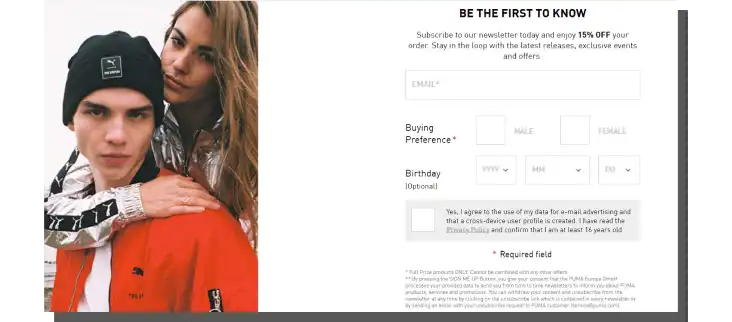
Various factors influence the Conversion Rate. Namely, they include the following:
- Price
- Page loading time
- Order processing time
- Available payment methods
- Seasonal trends
- Delivery methods
- Profiling of the store
- Range of products
- Sources of traffic
- Tailoring functionality, interface, and design to the needs of a particular category of customers.
Naturally, Conversion Rate Optimization (CRO) of the online store is not only possible but also recommended.
Optimization is a continuous process. One-time operations (e.g., in the area of User Experience) won't answer the daily challenges that online stores face.
The process of aggregating data and their analysis and entering changes after their analysis is a process that should be coordinated regularly, cyclically, and methodically. This process is based, of course, on research during which usually the following are being studied:
- Functionalities
- Interfaces
- User-friendliness of forms
- Various aspects of the online store design
- Search engines
- Paths to purchase
- Text layers (Microcopy)
- The efficiency of products pages and home pages
- Photos.
And many more different aspects. At the same time, Customer Research is the most critical key to improving the Conversion Rate.
How to increase Conversion in an online store?
The starting point leading to answering this question is always wanting to discover what users do on a site. But remember.
Focusing on User Flow, interactions with interface elements, and customer experience is not the same as analyzing data from analytical systems.
For example, while very useful, HotJar and Google Analytics will not provide concrete answers in terms of reasons, emotions, reactions, resistances, or cognitive frictions.
Quantitative data naturally allow you to discover the scope of the problem but, unfortunately, will tell you nothing about the causes of the issue.
They're invaluable when it comes to the following:
- Discovering the sources of traffic
- Length of a session
- Loyalty
- Tools used by store's customers
- Geolocation
- Calculating the Conversion.
However, quantitative data cannot answer the question of whether the reason for cart abandonment, for example, was:
- Lack of a specific payment method
- Lack of return policy
- Need for registration
- Unattractive price
- Low-security
- Complex payment process
- High delivery costs.
It's best to look for the causes of low Conversion Rates through specific qualitative research. But we'll tell you more about it in a moment.
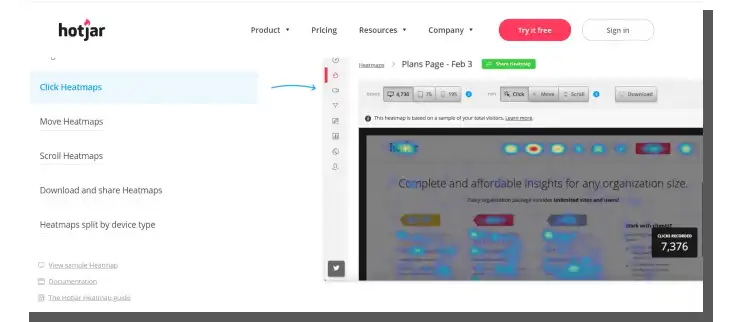
Let us stay on the topic of general optimization guidelines for a little longer because they're worth considering. After all, they're "critical areas" that should be addressed before performing a study.
Various types of optimization guides regarding Conversion Rate suggest, rightly so, to mainly take care of the following:
- Readability, cleanliness, and consistency of the layout
- Adding intuitive and logical filters in search results
- Intuitiveness of the navigation and interface
- Offering a live chat
- Providing the option to rate and review the product
- Optimization in terms of mobile devices
- Personalization of the offer
- Emphasizing the Value Proposition
- Widespread access to the "Add to cart" and "Proceed to checkout" buttons
- Formulating clear terms and conditions of delivery and returns
- Facilitating the process of placing an order
- Maintaining contact with a customer through e-mails informing them about an abandoned cart
- Implementation of processes that raise security
- Using the potential of animations
- Utilizing social proof that improves the credibility of the online store
- Usage of trust signals
- Utilizing high-quality photos in considerable numbers.
As you can see, many areas can affect the Conversion Rate, and there are many ways of improving it in an online store. Of course, the abovementioned ones are the most typical and common.
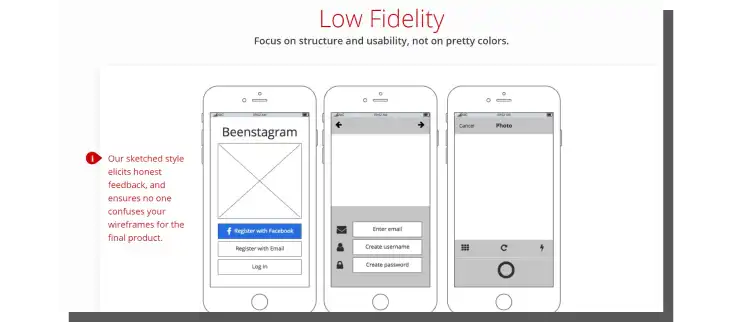
It's a source of research hypotheses that should be confirmed through study. Performing the optimization of the Conversion Rate "blindly" is rarely effective. And it often results in a waste of resources and time.
Customer Research — why should you study customers of an online store?
If we wanted to indicate the most general goal of the research, it would be the awareness of what customers want, need, and don't want and don't need. Research also enables online stores to avoid designing "for everybody and for no one."
Thanks to Customer Research, you know who is your customer, how they will use your store, and what they expect from it.
Studying customers' expectations is a process aimed at understanding behaviors, needs, attitudes, emotions, evaluations, and motivations through observation, collecting, and synthesizing data.
It allows you to understand the following:
- How tasks are performed
- In what contexts they're performed
- With what effect are tasks performed
- Over what time they're performed
- With what level of satisfaction they're performed.
Moreover, it also enables you to find answers to questions regarding goals, namely the following:
- What makes it difficult to achieve the goal?
- Thanks to what, you achieve a given goal?
- What is the effect of the achieved goal?
- How can you achieve a given goal?
Furthermore, research allows you to:
- Increase benefits for the store's customers
- Discover the advantages of the online store from the perspective of customers
- Increase sales and retention, improve experiences, and deepen loyalty
- Discover unknown customer needs
- Diagnose unknown problems
- Make informed decisions regarding the strategy of the store's development
- Understand the interactions of the user with the store's interface
- Increase customer satisfaction.
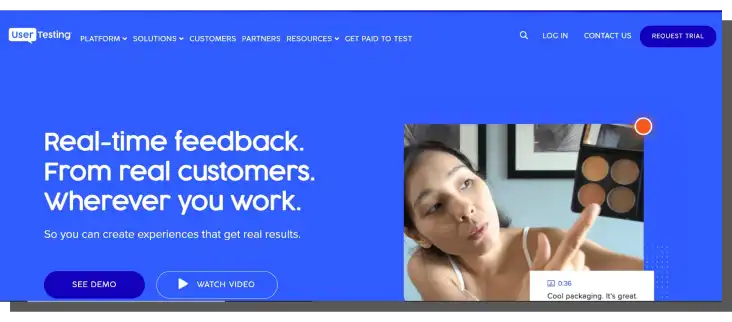
Studying the needs of online store customers
The most fundamental division of research is, naturally, the division into qualitative and quantitative research.
The essence of quantitative research is to collect data from a representative group and analyze it. It allows you to answer the questions: "Who?", "What?," "When?" and "Where?"
Qualitative research methods involve direct observation of users. It can be conducted in a laboratory or the field. It doesn't require a vast number of respondents. It usually is performed in small groups of several people.
Qualitative research enables you to understand causes and motivation in terms of behaviors of online store users. It provides you with answers on: "How" and "Why."
If you looked at research through the criteria of its goal, you would be able to distinguish research aimed at the following:
- Discovery, e.g., interviews with users or stakeholders (User Interviews or Stakeholder Interviews), field studies, and diary studies.
- Exploring, e.g., creating Personas (Persona Building), task analysis, user journey mapping, card sorting
- Testing, e.g., usability testing, benchmarking, accessibility evaluation, and prototype & feedback testing
- Listening, e.g., surveys, frequently asked questions reviews.
The selection of a specific research method depends on the goal the research is supposed to achieve. From the perspective of user experience that, to a large extent, is responsible for increasing the Conversion Rate, the following methods are significant.
A/B tests
It's a method involving comparing two solutions and checking which one is more preferred by users. You can compare any element of the online store. It can be the product page's layout or the color of the buttons.
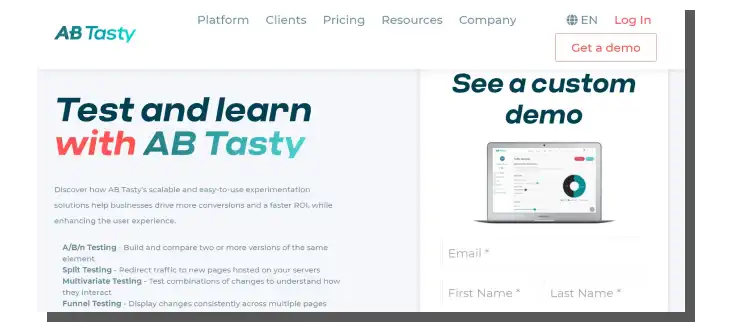
A/B tests are performed based on the same variables (e.g., display time or the number of views). This method is conclusive, objective, and reliable. It can be used at any moment and doesn't interfere in any way with the operation of the online store. Most importantly, conducting A/B tests is relatively cheap.
Usability Testing
It's probably the most canonical, known, widely used, and respected method. Often Usability Testing is treated as a clue of Customer Research.
Usability Testing usually is performed in laboratories prepared for this purpose, but remote tests are also becoming increasingly popular. Thanks to dedicated software.
Usability testing can be carried out in two variants: moderated and unmoderated.
Moderated Usability Testing is a traditional form. During the test, a user is asked to perform various tasks in the online store. A moderator can, for example, ask them to find a specific product or make a purchase.
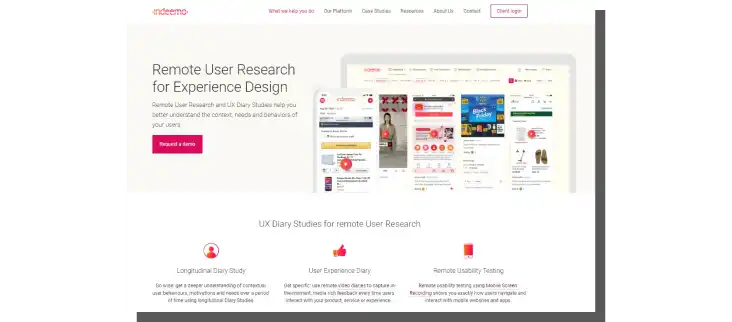
Usability Testing allows you to diagnose all critical elements of the store that are incomprehensible, unintuitive, illogical, difficult, inconvenient, etc., for a user.
Users that test the online store are usually encouraged to think out loud and share their reactions during tasks.
First Click Testing
If you want to find out what an online store user would click on first if they had to perform a specific task, that's a method for you.
The importance of First Click Testing manifests itself in the ability to test navigation and interface operation.
The ease of achieving goals and performing tasks depends on the user's first choice. If it is correct, the probability of completing the task grows significantly.
You can read more about this type of research in "Getting the first click right," written by Jeff Sauro, and in the article "First Click Testing."
From the perspective of the purchase in the online store, it has a significant impact because it counteracts cognitive frictions and the sense of confusion and frustration.
By observing behaviors, reactions, and actions of online store users, you can gain insight into the following:
- Comprehensibility of the design (as a whole and of crucial elements)
- User expectations (especially regarding navigation, menu, or interface)
- The efficiency of the online store's design (in particular, how fast users can perform given tasks).
Context of use analysis
The purpose of this method is the discovery of typical situations, circumstances, conditions, and limitations that affect customers during online shopping.
Context of use analysis enables you to understand the user and determine actual actions that often differ significantly from those declared.
The context in which users shop is crucial for Conversion. It's especially vital in the case of mobile applications.
Admittedly, more online purchases are made on desktops than mobile devices, but the opposite trend intensifies each year.
Context of use analysis enables you to understand user experiences, discover relationships between stimuli that affect them in different situations and circumstances, and how it influences performing tasks and achieving goals.
Often it is the context of purchase that has a significant impact on the level of the Conversion Rate. This method precisely serves to understand this relationship and capture elements that you should improve to facilitate performing tasks in the store.
Use Cases
Use Cases capture perceptions and expectations of online store customers regarding a given functionality. They're a description of how to use a given functionality.
The Interaction between the customer and the interface allows you to diagnose the basic requirements the online store should meet for its customers to want to make purchases in it.
Individual In-Depth Interviews (IDIs)
It's a method that provides insight into how the store's customer thinks and acts. Individual In-Depth Interviews allow you to diagnose attitudes, behaviors, and motivation.
By asking various questions to the user, the researcher can reach beliefs, experiences, and attitudes that aren't always conscious.
Naturally, the interview is not a collection of random questions. It has a structure, goal, and methodology. Thanks to this, the researcher can capture the customer's perspective and simultaneously not lose the ability to discover a specific problem.
The interview is usually carried out in the inverted pyramid formula. The researcher first asks general questions and gradually moves to more detailed ones.
Card Sorting
The objective of Card Sorting involves finding out how users categorize information and create structures, hierarchies, and groups. Respondents are asked to categorize words printed on cards.
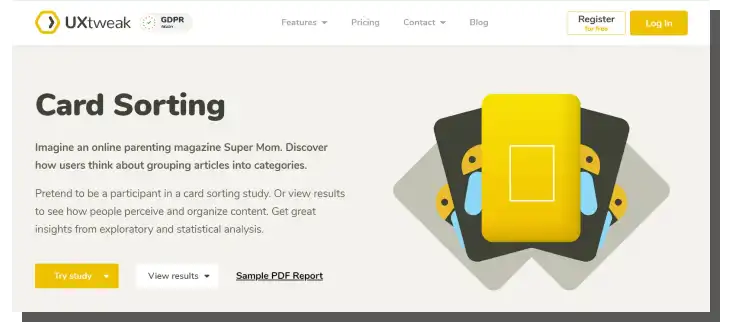
Card Sorting comes in two variants: closed sorting and open sorting. In the first variant, users receive the names of categories, and in the second one, they create them themselves.
Card Sorting enables you to diagnose problems with information architecture regarding ways of categorizing products and creating menus.
The hierarchy and categories present in the store should correspond as much as possible to the way customers perceive them.
And that's the purpose of Card Sorting.
Persona
Do you want to increase the Conversion Rate? Then get to know your customer! That's how we can describe the essence of creating Personas, that is, types and representations of online store customers.
User Research is a basis for creating Personas, and thanks to it, you can discover actual needs, motivations, and behavioral patterns.
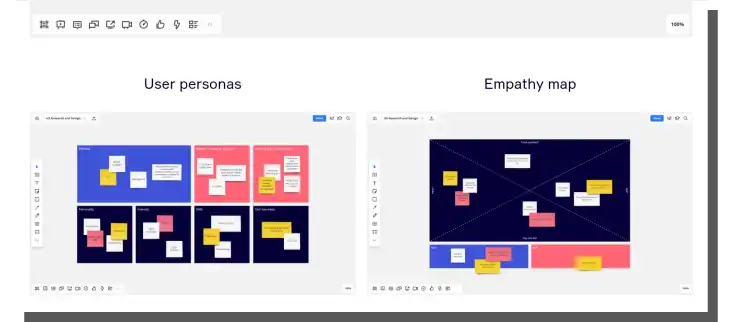
By knowing your customers, you can adjust the design, functionalities, aesthetics, information architecture, etc., to the needs of individual customer segments. The utility is a product of tailoring solutions to the needs of specific customer groups.
Creating models and very specific Personas of customers allows you to become aware of the following:
- Who are the customers, and what are their attributes?
- How do they think and behave?
- What are their needs, what motivates them, and what do they dislike?
Multidimensional understanding of customers — in terms of socio-demographics, emotions, and personality — understanding their needs and behaviors is essential to increase the Conversion Rate.
Conversion Rate in an online store. Customer Research. Summary
- Conversion Rate (CR) describes the ratio of completed transactions (or other desirable actions) and visits multiplied by 100%.
- Conversion Rate "shows" how many online store visitors behave according to expectations.
- Increasing the Conversion Rate by even fractions of a percent translates into increased store sales.
- Optimization of the Conversion is a continuous process.
- The process of implementing changes after the analysis of collected data should be regularly, cyclically, and methodologically coordinated.
- Quantitative data cannot answer the question of what was the cause of, for example, cart abandonment.
- Performing the optimization of the Conversion Rate "blindly" is rarely effective.
- Research enables online stores to avoid designing "for everybody and for no one."
- Customer Research allows you to discover who the store's customer is, how they will use it, and what they expect.
- Customer Research enables you to understand behaviors, needs, attitudes, emotions, evaluations, and motivations through observation, collecting, and synthesizing data.
- It includes research aimed at discovery, exploring, testing, and listening.
- A/B Tests are a method used to compare two solutions effectively.
- Usability Testing enables you to diagnose all critical elements of the store.
- First Click Testing tests the operation of navigation and interface.
- Context of use analysis enables you to understand user experiences and discover relationships between stimuli that affect them and how it influences performing tasks and achieving goals.
- Use Cases capture the perceptions and expectations of customers regarding a given functionality.
- Individual In-Depth Interviews allow you to diagnose attitudes, behaviors, and motivation.
- Card Sorting enables you to diagnose problems with information architecture regarding ways of categorizing products.
- Building Personas is a method of creating representations of typical representatives of a given customer segment.







